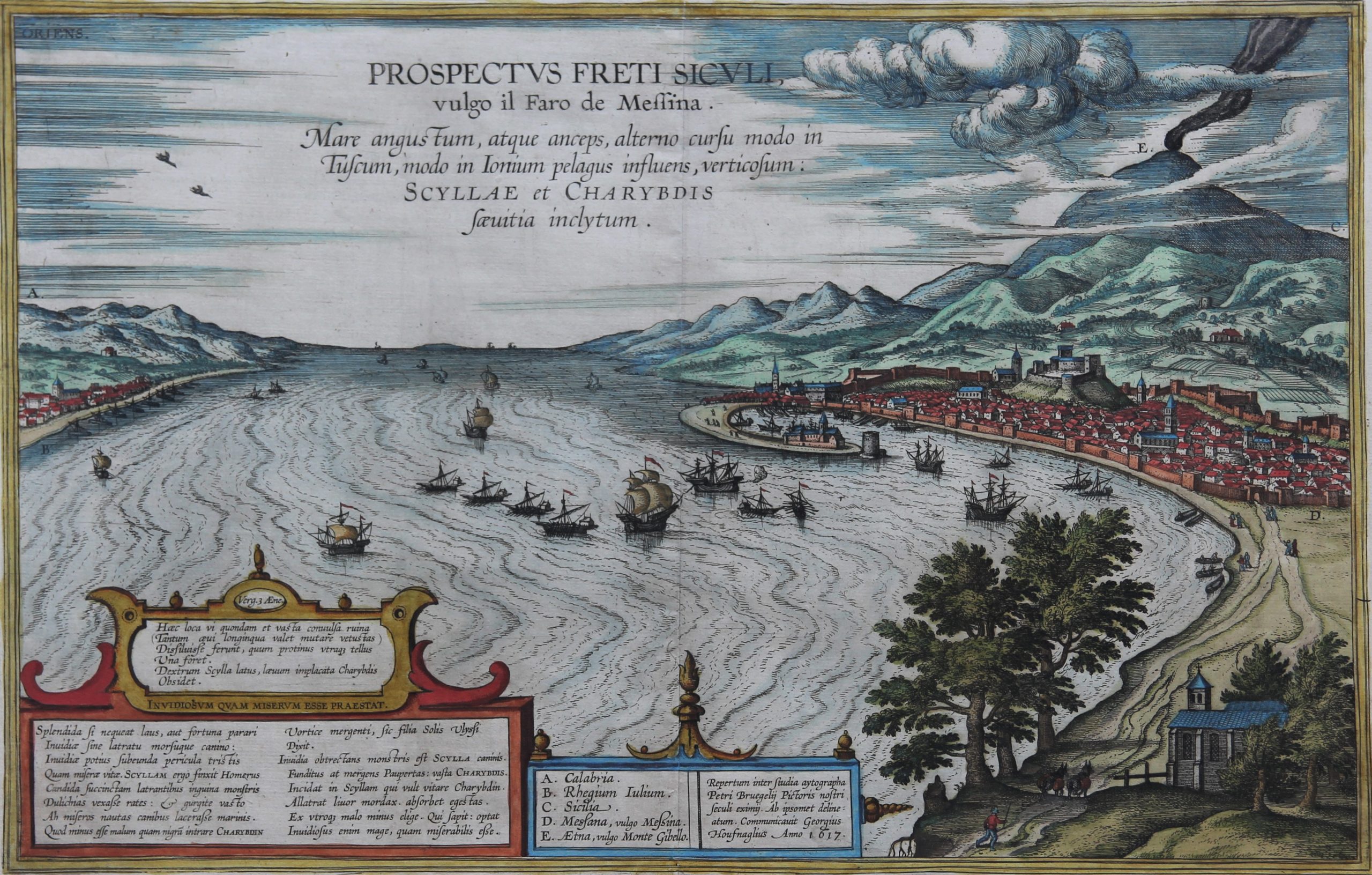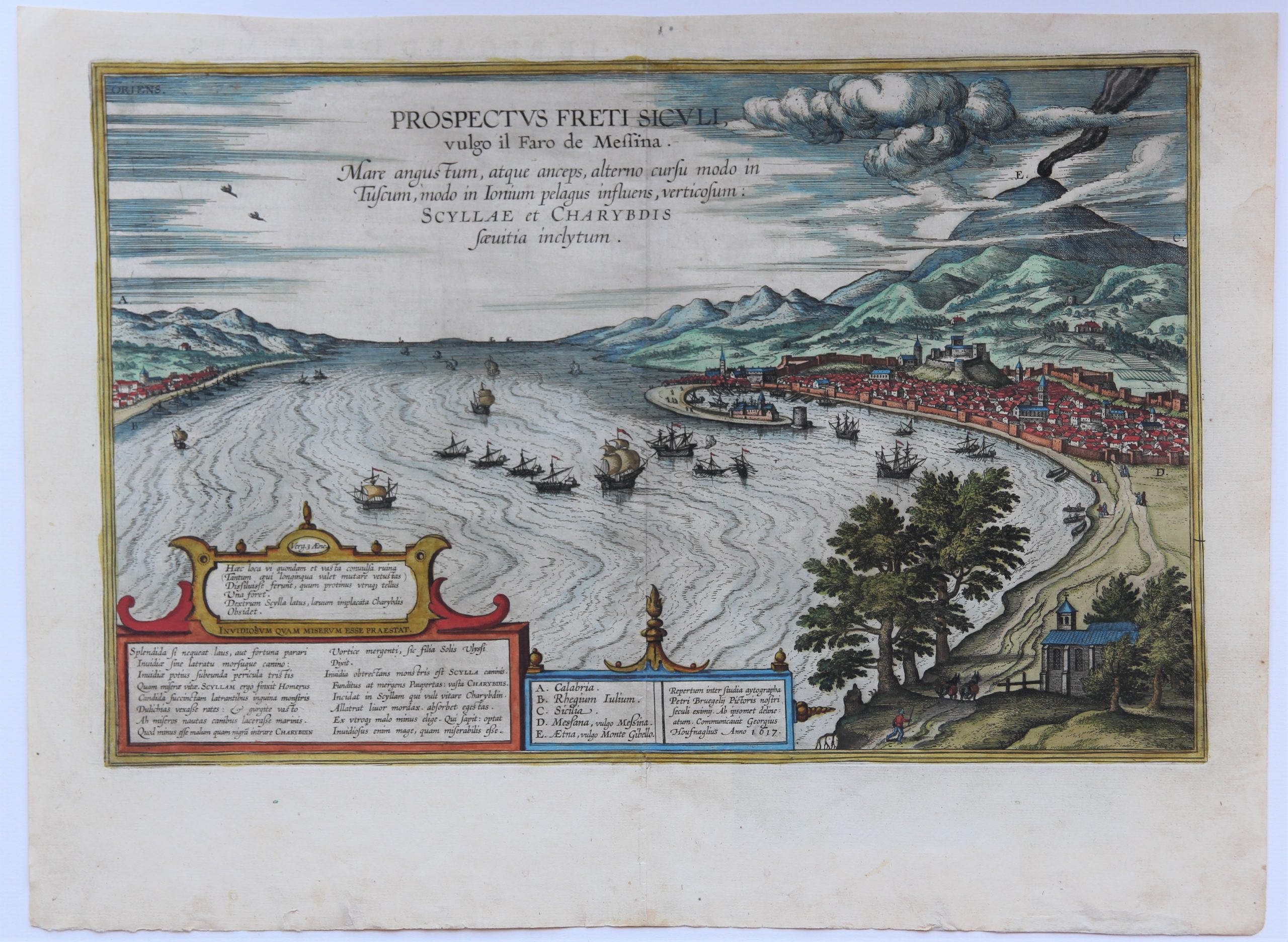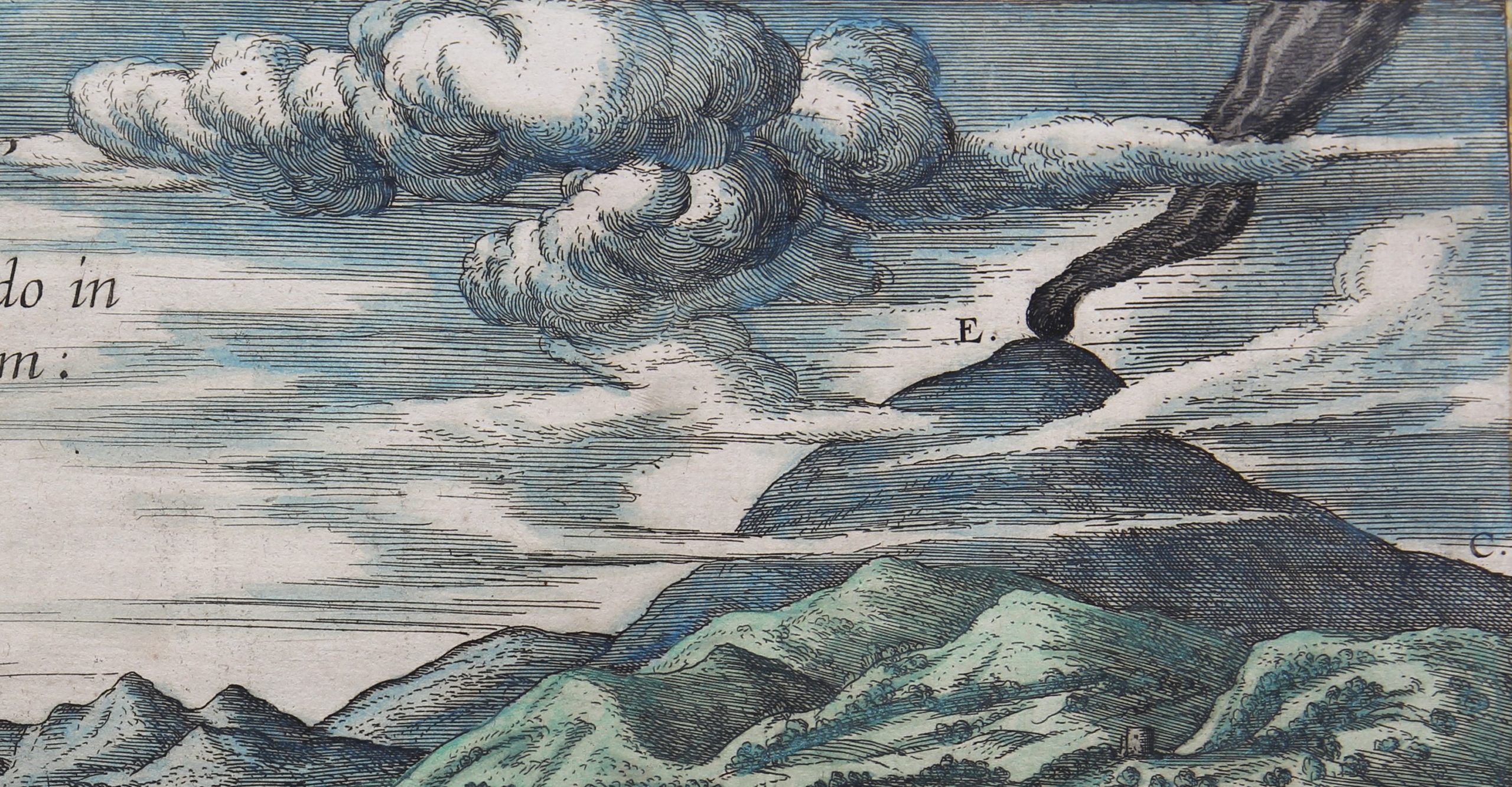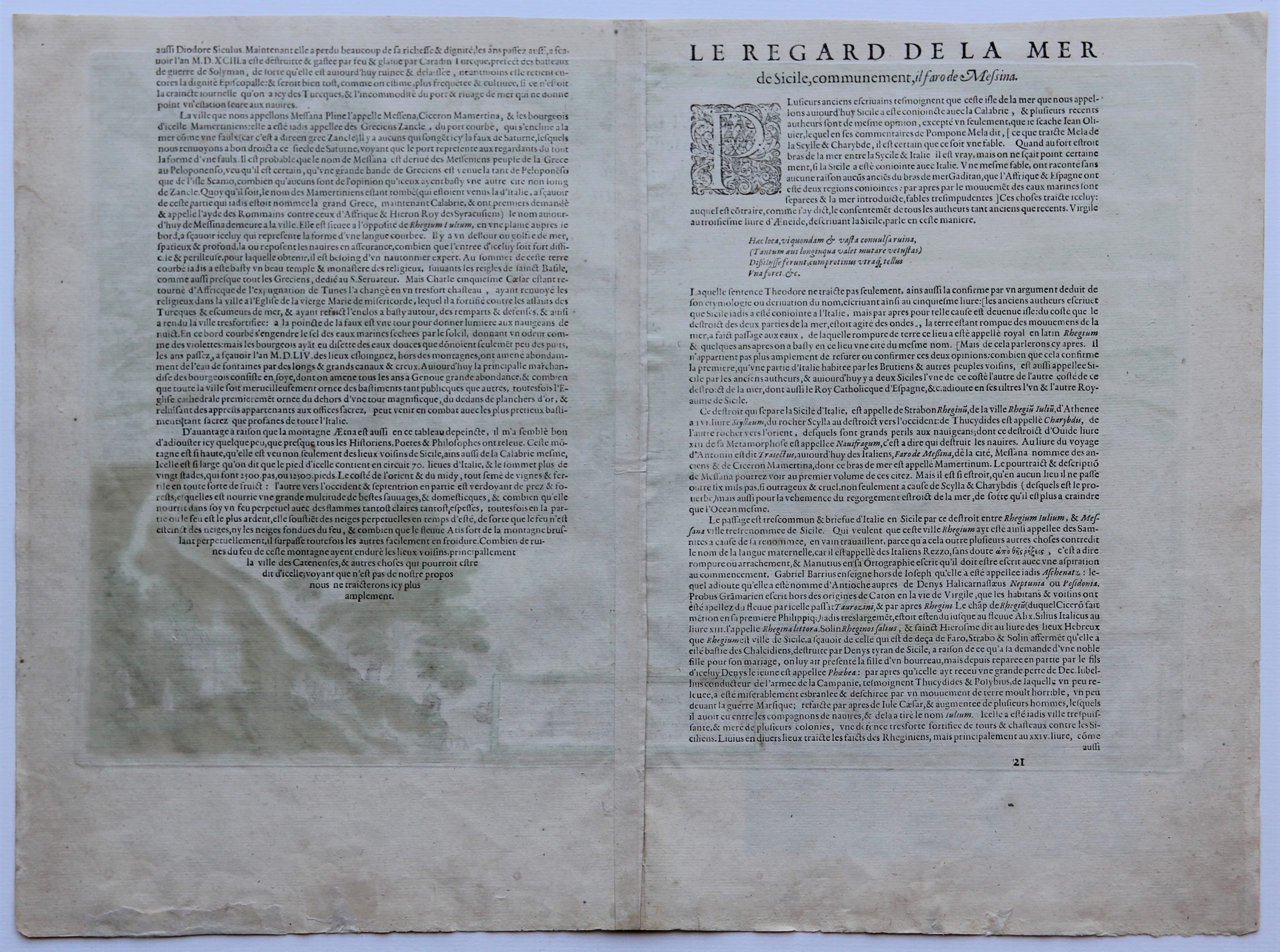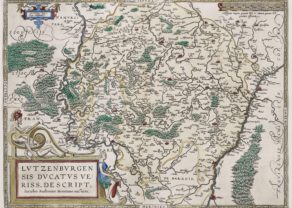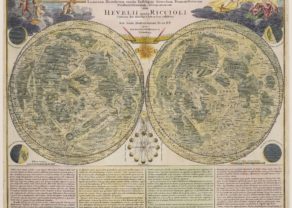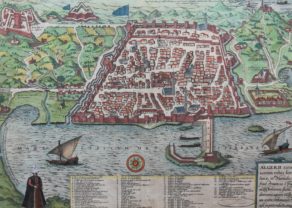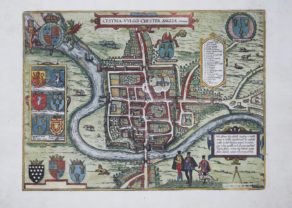Strait of Messina
Detail
Date of first edition: 1617
Date of this edition: 1625
Dimensions (not including margins): 30,5 x 47,3 cm
Dimensions (including margins): 40 x 54 cm
Condition: Very good. Sharp copper engraving printed on paper. Old coloured. Wide margins. Centre old as published. Small professional repair at right bottom margin.
Condition rating: A
Verso: text in French
Map reference: Van der Krogt 4, 2706; Fauser 8760, Fauser 8760; Taschen, Br. Hog., p. 490.
From: Théatre des Principales Villes de tout l’Univers, Liber Sextus, first published 1617, this edition 1625, Köln. Van der Krogt 4, 41:3.6.
In stock
Strait of Messina commented by Braun
“But the Latin authors refer to this strait by many names – there is no need to list them all here. It is so narrow that in some places it is scarcely 6,000 paces wide, and so stormy that there are more dangers here than on the high seas, both because of the two rocks Scylla and Charybdis and because of the strong current. […] This mountain is so high that it can be seen not only in the whole of Sicily, but also in Calabria on the other side of the sea. […] Now although the interior of this mountain is always burning, and flames shoot up, sometimes bright and sometimes dark, it is always full of snow at the places where the fire burns most fiercely, even in the middle of the summer. Thus, the snow is not melted by the fire, nor is the fire extinguished by the snow.”
TRANSLATION OF CAPTION: “View of the Strait of Sicily, in the vernacular the “Strait of Messina”. A strait, dangerous and flowing in two directions, into the Tuscan Sea and into the Ionian Sea, full of whirlpools, known as Scylla and Charybdis because of their ferocity. (Prospectus Freti Siculi vulgo Faro di Messina)
CARTOUCHE BOTTOM RIGHT: *Discovered among autograph studies by Pieter Brueghel, the great painter of our time. Drawn by himself: procured by Georg Hoefnagel. In the year 1617.
Taschen on the Strait of Messina
This is a view from the northeast of the Strait of Messina, with many ships passing to and fro. Part of the city of Reggio (B) and the Calabrian hinterland (A) can be seen on the left; on the right is the fortified city of Messina (D) with its characteristic crescent-shaped harbour, surrounded by green hills. In the middle of the city is the cathedral of Maria Santissima Assunta. The view is dominated by the smoking Mount Etna (A), at over 3,300m the highest volcano in Europe. That Braun should choose for the very last chapter of his lifework the place were, according to the ancients, the monsters Scylla and Charybdis dwelt, may be understood as a bow to Odysseus – not only the most prominent person to have passed through this strait, but also the first traveller in the history of humanity.
